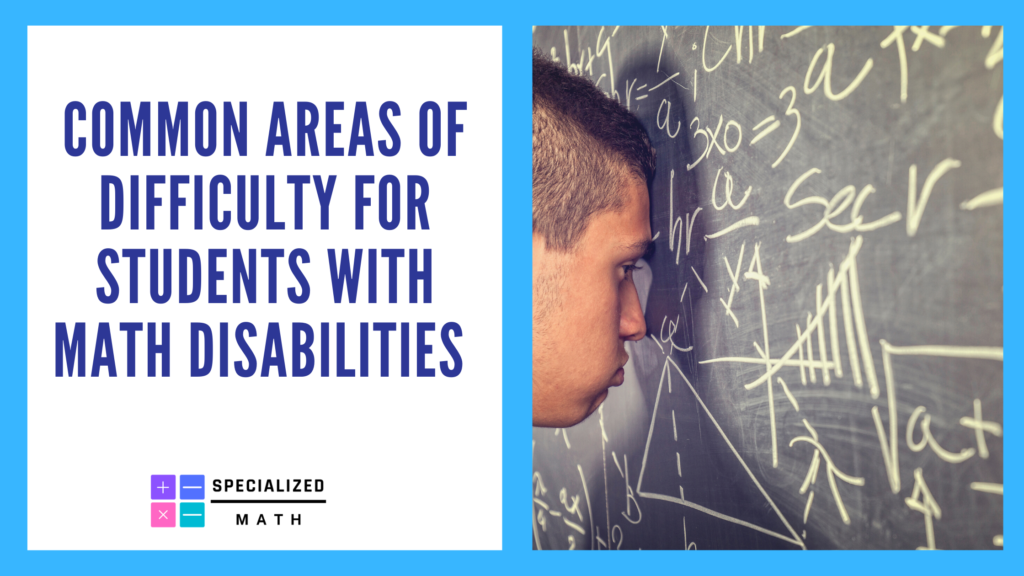Common Core Math has been in place for some time now. Even before Common Core, teachers were tasked with instructing students who may have math disabilities and difficulties.
Now that special education teachers are required to Common Core Math during a pandemic, it is more important than ever to have a better understanding of math disabilities. In this post, we discuss some of the common challenges that students with math disabilities may experience as they engage in math instruction.
One of the earliest areas of difficulty for students are counting and magnitude, or size. Students with math disabilities will frequently miscount or double count. They also frequently utilize inefficient strategies for counting.
Students with math disabilities may also struggle with telling how many items are in a set, also known as cardinality. As math concepts progress, students with math difficulties can also have issues with telling time.
Fluency with basic number combinations can be a struggle along with a conceptual understanding of basic number combinations. Simple 1-digit problems involving the four operations can be challenging for students with math difficulties. Intervention should occur early because this skill sets the foundation for more complex math concepts in later math grade levels.
Math interventions and special education services directed towards students with disabilities should ensure that students are fluent with their understanding of what quantities the different numerals represent. The goal should also be for students to be fluent in the 100 addition, 100 subtraction, 100 multiplication, and 90 division combinations.
It is suspected that some students may have deficits in semantic memory and working memory which can impact the ability to automatically retrieve information.
Students with math disabilities often move throughout their school careers without ensuring that these foundational skills are in place. This frequently results in special education students having trouble with multi-digit computation problems. Visual and spatial difficulty can interfere with the understanding of place value.
Problem solving is another area that students with math disabilities struggle with. This can be multi-layered with difficulty arising from the challenges already discussed along with language comprehension and an overlap with difficulties in reading.
When delivering a grade level curriculum, such as Eureka Math, it is important that we determine the appropriate entry point for students with math disabilities. Knowing the common challenges that students with IEPs face, also supports with developing IEPs, including writing IEP goals.
Special education teachers should strategically focus on foundational standards and skills necessary to engage in grade level math work. When doing this, special education teachers can develop an individual scope and sequence for a student that can result in gains in math.


Pingback: Planning a Eureka Math Lesson for Students with Disabilities - Specialized Math